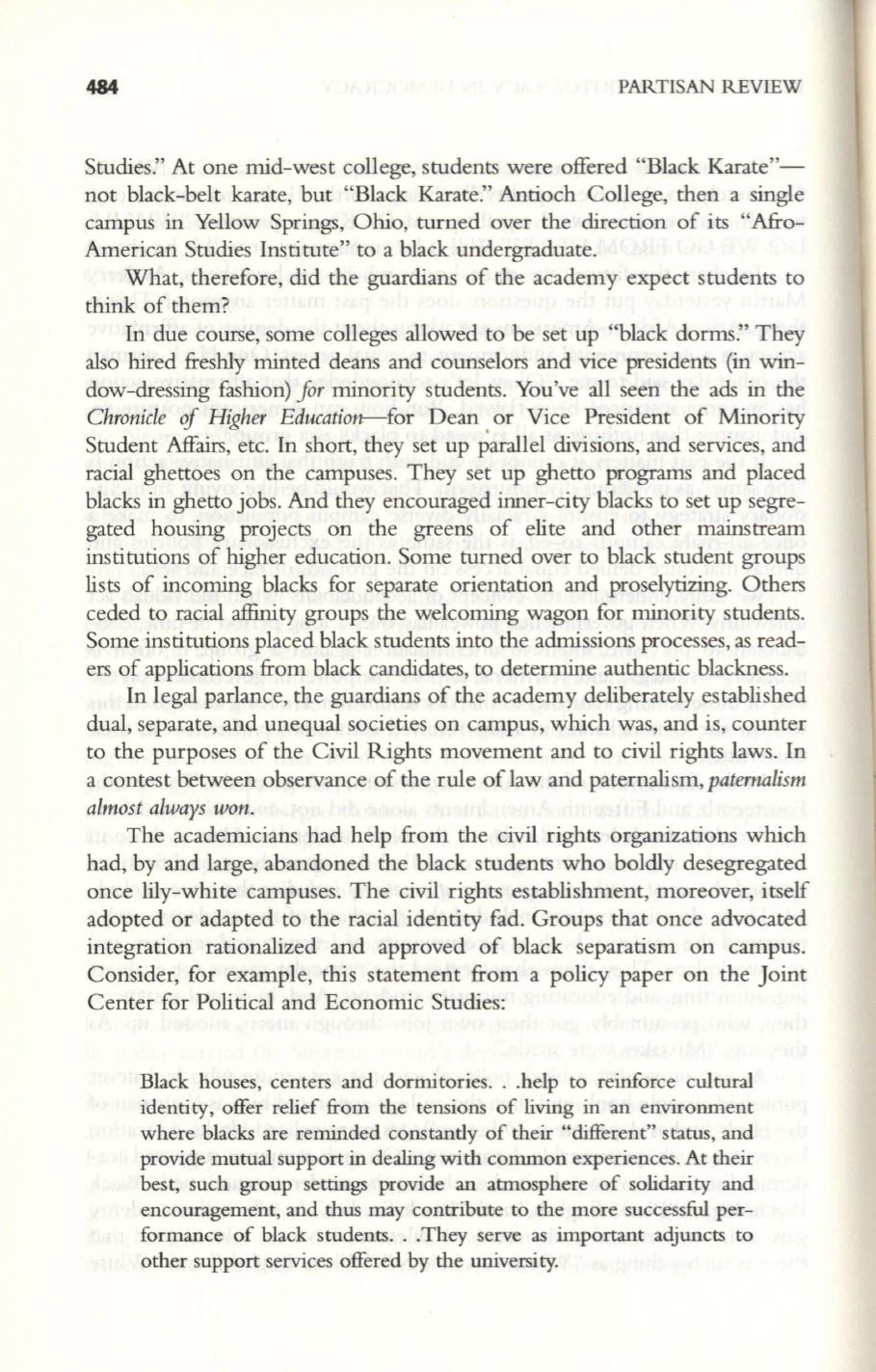
484
PARTISAN REVIEW
Studies." At one mid-west college, students were offered "Black Karate"–
not black-belt karate, but "Black Karate." Antioch College, then a single
campus in Yellow Springs, Ohio, turned over the direction of its "Afro–
American Studies Institute" to a black undergraduate.
What, therefore, did the guardians of the academy expect students to
think of them?
In due course, some colleges allowed to be set up "black dorms." They
also hired freshly minted deans and counselors and vice presidents (in
win–
dow-dressing fashion)
for
minority students. You've all seen the ads in the
Chronicle
of
Higher Education--for
Dean or Vice President of Minority
Student
Affairs,
etc. In short, they set up parallel divisions, and services, and
racial ghettoes on the campuses. They set up ghetto programs and placed
blacks in ghetto jobs. And they encouraged inner-city blacks to set up segre–
gated housing projects on the greens of elite and other mainstream
institutions of higher education. Some turned over to black student groups
lists of incoming blacks for separate orientation and proselytizing. Others
ceded to racial affinity groups the welcoming wagon for minority students.
Some institutions placed black students into the admissions processes, as read–
ers of applications from black candidates, to determine authentic blackness.
In legal parlance, the guardians of the academy deliberately established
dual, separate, and unequal societies on campus, which was, and is, counter
to the purposes of the Civil Rights movement and to civil rights laws. In
a contest between observance of the rule oflaw and paternalism,
paternalism
almost always won.
The academicians had help from the civil rights organizations which
had, by and large, abandoned the black students who boldly desegregated
once Wy-white campuses. The civil rights establishment, moreover, itself
adopted or adapted to the racial identity fad. Groups that once advocated
integration rationalized and approved of black separatism on campus.
Consider, for example, this statement from a policy paper on the Joint
Center for Political and Economic Studies:
Black houses, centers and dormitories. . .help to reinforce cultural
identity, offer relief from the tensions of living
in
an environment
where blacks are reminded constantly of their "different" status, and
provide mutual support
in
dealing with common experiences. At their
best, such group settings provide an atmosphere of solidarity and
encouragement, and thus may contribute to the more successful per–
formance of black students.. .They serve as important adjuncts to
other support services offered by the university.


